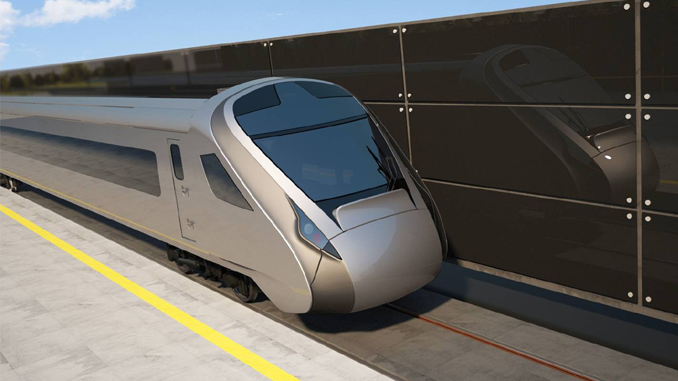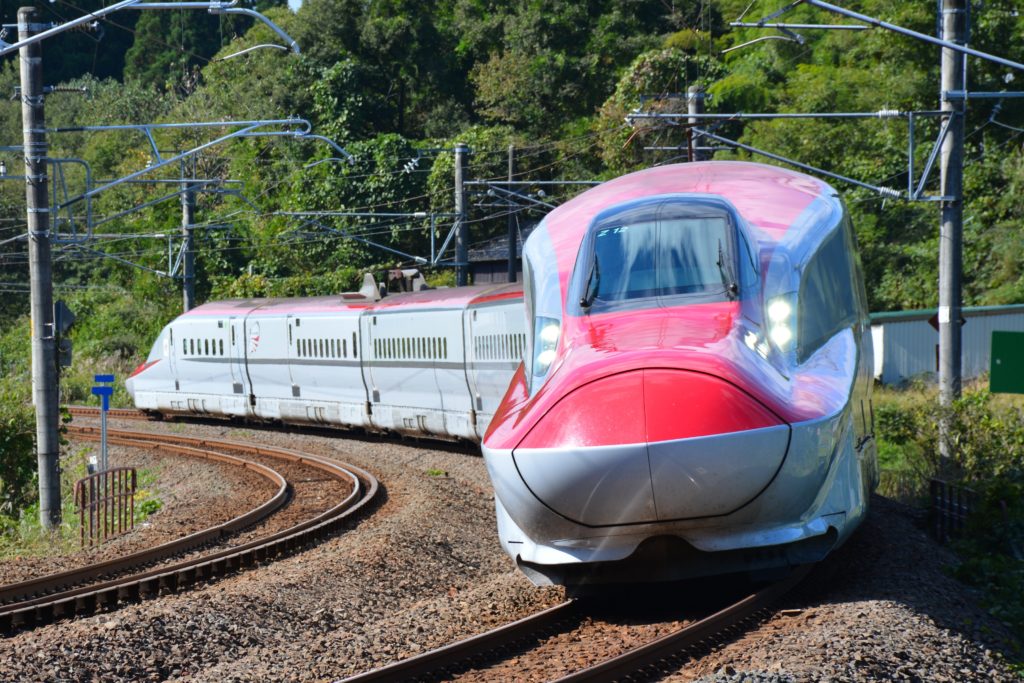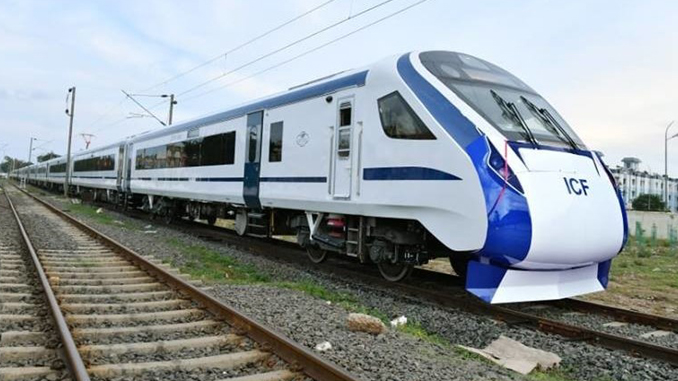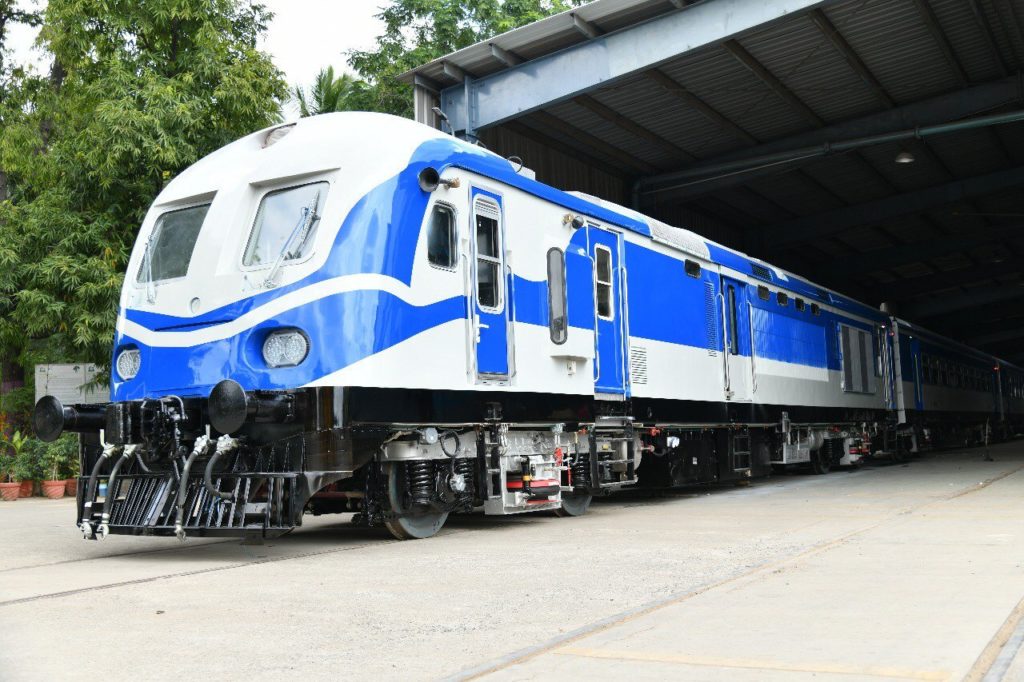
Introduction : Indian Railway has the 4th world’s largest rail network. The route length network of Indian Railway is spread over 115,000 kms with 12,617 passenger trains and 7,421 freight trains each day from 7,349 stations.
This Railway Network is ideal for long distance travel and movement of bulk commodities, from being an energy efficient and economic mode of transport.
The Indian Railways is now focused on increasing its production and export to countries globally besides introducing new technology in the Indian market .
Story so far : The government of India has focused on investing in railway infrastructure by making investor friendly policies.
It has enabled the Foreign Direct Investment (FDI) in railways and resolved to improve infrastructure for freight and high speed trains. Nowadays, several domestic and foreign companies are looking to invest in Indian Railways.

Image Credit: Wikipedia
There exists a significant Indan opportunity for International companies in the Indian Railway growth story and also Global opportunity for Indian suppliers of railway equipment, rolling stock and services.
Further , India is building the country’s first high speed rail corridor between Mumbai to Ahmedabad which is expected to be operational by 2022.
Export potential for Indian Industry : Significant part of required technology is available indigenously & Exports will help to improve both top line and the bottom line of Indian Railways, as the fixed cost shall be appointed over larger volume and innovation can be made viable .
Focusing on the world market will improve the quality of services & also allow Indian Railways to manage the large infrastructure and support systems in the country thereby delivering the products and services for sustaining operations.
The scale of manufacturing and services of Indian Railways can be leveraged to enable it to become a major role in global railway equipment, rolling stock, and services market.
One of the recent examples : Train 18 ,also known as Vande Bharat Express is India’s first semi high speed train indigenously developed in India . With the success of this train , the rolling stock market and the semi high speed railway market is looking at utilizing the opportunity to make an entry into unexplored market .

Image Credit: ICF
The train first trial run occurred on 29th October 2018 in Chennai where in Train 18 was inaugurated by Prime Minister Shri Narendra Modi on 15th February 2019, with the commercial run started from 17th February 2019 onwards. It will be running on the route Delhi – Varanasi via Kanpur and Allahabad and also connecting the Prime Minister’s Lok Sabha seat Varanasi.
Further looking at other examples , Bombardier Transportation, the rail equipment division of Canada’s Bombardier group, will use its first Indian metro rail factory in Savli, Gujarat,as a hub for exporting to South-East Asia. The Savli plant is also looking at supply metro rail cars and other equipment to China, Singapore and other South-East Asian countries. The first order of Bombardier was delivered to Delhi Metro Rail Corporation of 424 metro cars. Bombardier Transportation is also planning to supply high-power locomotives to Indian Railways .

Image Credit: Bombardier
Similarly , Alstom – Chennai has a strong presence in India where the company is executing metro projects in some Indian cities such as Chennai, Kochi, Lucknow where the rolling stock is manufactured in the state of the art facility at Sri City in Andhra Pradesh. Alstom has further supplied rolling stock to the Sydney Metro , thereby underlining the potential of equipment suppliers in India for exporting globally .
Additionally Companies such as Titagarh , CAF , Talgo etc are also in various stages of development of their Indian story ..
Looking at Indian Govt. Factories , MCF in August 2014 rolled out the first coach and since then it has doubled production almost every year.. In December 2018 , PM Narendra Modi flagged off the 900th coach manufactured at the factory , the production capacity at MCF is expected to rise from 1000 to 3000 per year by 2020-2021. MCF has the least cost of production of all Units of Indian Railways for coaches produced. They are now capable to export these coaches and other equipment to neighboring countries .
Projects of Indian Railways with Neighboring Countries : : India is expanding its railway network with neighboring countries such as :
1) Nepal : Jogbani – Biratnagar link : These are the two links between India and Nepal between Raxaul Junction, Bihar – Sirsyia, Pasra and Jayanagar, Bihar – Khajuri, Dhanusa.
2) Pakistan : Samjhauta Express – Pakistan and Thar Express were the only rail connection between India and Pakistan, the border crossing takes place is Wagah border in India.
3) Bangladesh : Maitri Express : This is an International border train that connects the Bangladesh capital – Dhaka to Kolkata in India. This is the only rail network link between India and Bangladesh that runs six days a week from each side.

Image Credit: Ministry of Railways
4) Bhutan : Indian Railways has plans to build a rail system between Bhutan that connects to India .
5) Myanmar : the railway track between Manipur to Burma is under construction.
6) Vietnam : The central Government is considering a rail link from Manipur to Vietnam.
7) China : There is also a proposal to to start a high – speed rail link from New Delhi to Kunming in China which is far fetched at the moment .
8) Thailand : Rail link to Thailand is also in the list of international passenger train service in India.
9) Singapore train link, if Burma railways is rebuilt then Indian railways will also allow trains to Singapore.
10) IRCON International Limited, the Railway arm which is an engineering and construction, specializes in transport infrastructure. Its primary involved in construction of railway projects in India and abroad . The major projects of IRCON are :
- Afghanistan – Iran : Chabahar – Zahedan Railways, in may 2016, Prime Minister Narendra Modi’s trip to Iran and the agreement was signed to develop two berths at Ports of Chabahar and to build new Chabahar – Zahedan Railways as a part of North – South Transport corridor by Indian Railways .
- Malaysia : This project includes design and construction, completion, testing, commissioning and maintenance of the double track project between Seremban and Gemas, Malaysia. IRCON is helping Malaysia revive a multibillion – dollar rail project that had been shelved in 2003 due to its high cost.
- Sri Lanka : After winning the project worth USD 1 Billion in Malaysia for doubling of the track the company was awarded the rehabilitation of Railway line projects of about 250 million US$ in Sri Lanka.
Benefits of Exports : Railways in India have been a tool for development, equity and integration of all parts of the mainstream. Railway Help in transporting goods and raw materials from different industries. Therefore all industries would benefit from it. Advancement in technology and making India a Railway hub will also help in travelling amenities to passengers and further also develop the services as well as tourism.

Image Credit: RCF
Export of India’s railways locomotives, rolling stock, equipment, has been extremely low. Export witnessed a sudden increase from US$ 56.8mn in 2010 to US$ 134.5 mn in 2011 and then it remained around the same level. While export in 2013 and since has increased slightly to touch US$ 192.4 mn , exports can further be escalated to increase the export economy .
The first set of Diesel Electric Multiple Units (DEMU) was exported by Indian Railways from Integral Coach Factory (ICF), from Chennai to Sri Lanka, each DEMU consisting of 13 coaches and totaling of 78 coaches.
All DEMU train sets are manufactured at ICF & these sets are of three phase AC propulsion system, superior suspension and superior interiors. The Indian Government has extended the line of credit (LOC) to many countries for funding Railway projects that have been utilized for export of rolling stock that manufactured by Indian Railways. It is expected that the cost of per coach will be 20% to 25% less than what is offered by other countries around the world.

Image Credit: ICF
Conclusion :The Railway industry is growing now a days and becoming successful day by day . Further , the manufacturing companies in India are growing and doing great innovations is making the Railway’s ecosystem a fertile ground for new manufacturers , entrepreneurs, innovators and those looking to deploy and test technology at a large scale . A global rail market will allow India to become a Rail Hub in the future .

